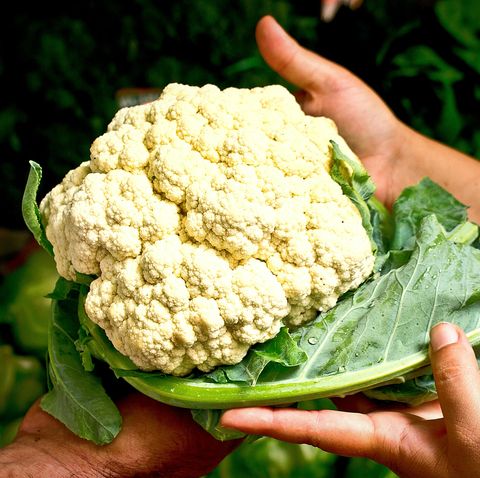If You Want Vitamin C, These 7 Foods Are Better for You Than a Supplement
Vitamin C is many things. It’s a nutrient that aids in your body’s fight against free radicals. It’s a nutrient that helps your immune system function properly. It’s … in orange juice?
“Vitamin C acts as an antioxidant in the body and is involved in many bodily functions, such as supporting a healthy immune system and heart health, stimulating collagen synthesis, and enhancing iron absorption,” says Charlotte Martin, M.S., R.D.N.
So you should just drink a lot of OJ, right? Or, if you can’t stand OJ, just take a supplement?

Subscribe to Men’s Health
SHOP NOW
Well, supplementation isn’t exactly the way to go. And there’s a world of delicious options beyond orange juice.
It’s also not that hard to consume your daily recommended value of the nutrient.
“The daily value of vitamin C is 90 mg and it can be found pretty easily in many different fruits and vegetables,” says Maggie Michalczyk, M.S., R.D.
And, unlike vitamin C supplements and OJ, the fruits and vegetables that follow also contain solid doses of fiber, which can help you stay regular, feel full for longer, and lead to a healthier heart.
Here are 7 foods high in vitamin C to start eating right now.
1. Bell Peppers

bhofack2
A half-cup serving of raw red bell pepper provides more than 100 percent of the vitamin C you need daily.
They’re also versatile. “I love to buy the frozen bell pepper mix and add it to easy weeknight stir-fry. Or, buy mini bell peppers and use them to make mini bell pepper nachos,” says Martin.
Slice the mini bell peppers in half and stuff with cooked ground turkey (seasoned with taco seasoning), salsa, and shredded cheese, then heat in the oven until the cheese has melted.
2. Papaya

Westend61
A half-cup serving of papaya provides nearly 100 percent of the daily value for vitamin C. “Papaya contains the enzyme papain, which can help make protein easier to digest, too,” says Martin.
Fresh papaya is a good addition to a homemade salsa: “Toss finely diced papaya with diced avocado, jalapeno, red onion, lime juice, and cilantro,” says Martin.
3. Broccoli
A half-cup serving of cooked broccoli provides nearly 60 percent of the daily value for vitamin C. “Broccoli is also a good source of vitamin K, a fat-soluble vitamin that plays an important role in blood clotting,” Martin adds.
You can add broccoli to a variety of dishes, such as eggs, stir-fry, salads, soups, and salads. “I love to add chopped broccoli to mini frittata muffins made with egg and cheddar cheese. I also love buying broccoli slaw and using it in tacos and salads,” says Martin.
4. Cauliflower

Daniel Pereira / EyeEm
You may not think of vitamin C when you think of cauliflower, but this cruciferous vegetable is a great source of the nutrient.
One cup contains 77 percent of the recommended daily intake, says Michalczyk. “Roast it up as a side dish to any meal, add cauliflower rice to stir fry, and reap the benefits of vitamin C, fiber, calcium and vitamin B6,” she says.
5. Spinach
“This super green is super easy to add to smoothies, use in salads ,or sauté and add to the side of any meal,” says Michalczyk. Plus, spinach contains over 200 percent of the daily value of vitamin C.
6. Pumpkin
While it doesn’t have a ton of vitamin C (one cup has 17 percent of the C you need daily), it’s a nice change-up from the rest of the list.
“This not-just-for-fall vegetable can easily be added to smoothies, baked goods, soups, stews and chili for more fiber, and vitamin A and C,” says Michalczyk. It tastes great sweet, spicy, and savory, so pair with different seasonings however you like.
7. Kiwi

AleksandarGeorgiev
Kiwis contain 79 percent of your daily value of vitamin C. “These fuzzy green fruits can easily be added to smoothies or snacked on in a variety of ways,” such as in a salad, fruit bowl, or with yogurt or oatmeal, says Michalczyk.
“Kiwis also contain an enzyme that helps break down collagen in meat, making it tender, so also consider adding the pulp to your meat marinade,” she adds.
Source: Read Full Article
